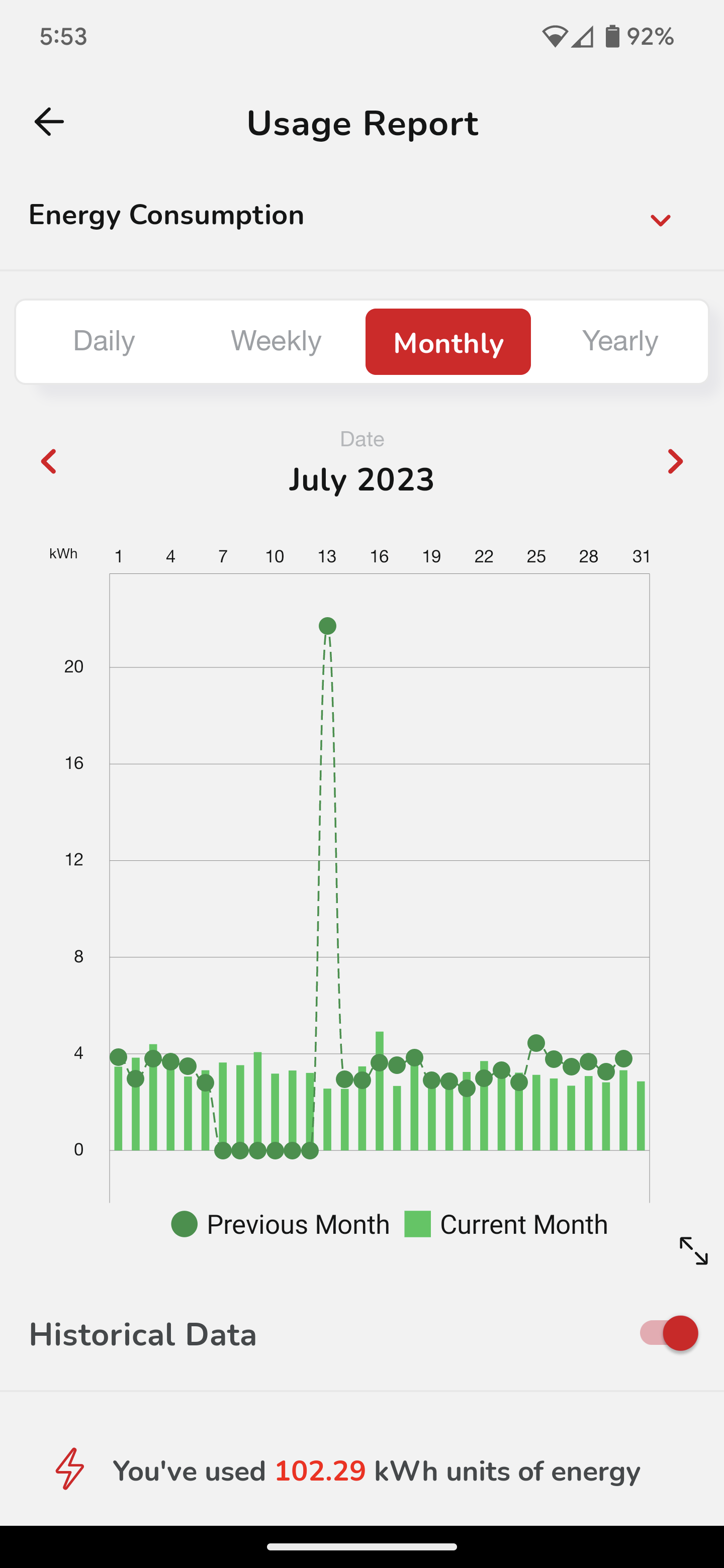I have this exact model, and I wish I didn’t. It turns out there’s a flaw in the logic that controls the heating elements. When in “Energy Saver” mode (the default mode), the lower heating element won’t heat the water. So when you start to use the hot water, as the hot water goes out, the replacement cold water coming in isn’t getting heated at the bottom. This drops the temperature of the existing hot water in the tank, and it takes several hours of no hot water use for the tank to get to your desired temp. For my family it means we get about 1 1/2 showers (showers last about 7 or 8 minutes) before the water starts coming out lukewarm. You can see this happening on your unit by activating the diagnostic mode on the panel and watching the lower element water temp.
I went several rounds with Rheem’s customer support (including have two separate techs come to my house to inspect it) before someone finally acknowledged in writing that there’s a known defect in the logic of the controller board. They tagged my unit as defective, but so far have not been able to replace it since they haven’t engineered a fix and started producing a new version of the water heater with said fix.
My advice, stay away from Rheem hybrid water heaters for a while until they get it sorted out. Also, pro tip: Keep it on the “High Demand” mode so that it’s always using electricity + heat pump to heat the water. That gives you the most aggressive heating profile and does not contain the flaw where the lower heater element won’t activate. This was the advice their engineer gave me, and it’s allowed us to have hot water for more than a shower or two.
This is interesting. Rheem used to be seen as a premium brand in Australia… I wonder if they’ve gone downhill.
Keep it on the “High Demand” mode so that it’s always using electricity + heat pump to heat the water.
How much more electricity does this use?
I don’t have historical data for the initial time period where I was trying to use this “normally” / using the default mode. However, here’s a screen shot of last month’s usage. Two adults in the house.

I was considering buying one so this is good to know. I wonder if AO Smith hybrid water heaters are any better.
I don’t get why these need to become complicated enough to become trouble. They’ve worked very well with just a thermocouple and a gas valve for decades and you’ll get 20 years out of one with no issues.
No expansion tank?
Guessing its a hybrid unit? I have a hybrid one by GE. Goddamn its loud.
Don’t forget to turn up the water temperature. Mine also was set to 120 by default, but that’s too cold. You need 135-140 or so, otherwise you’ll find that you run out of hot water pretty quickly, especially if you have people taking showers back to back, or running the dishwasher/washer while someones showering, etc.
What’s an expansion tank? I set it up like the old one was set up. Oh I did was disconnect the old one and reconnect the new one to the same pipes coming out of the wall.
An expansion tank is necessary for water heaters, because the process of heating water causes it to expand. Without an expansion tank, pressure could build to unsafe levels
All tanks are equipped with a safety release for the pressure and the only time when that delta in pressure can be problematic is when you go from completely cold to hot due to the higher amount of water that can fit in the tank at lower temp.
Otherwise I’ve never seen a house in Canada with an extension tank attached to the water heater and the water come in ice cold in the winter.
Another comment here says the lower element of this unit has a flaw. Might look into that.
Huh, 50 °C is really cold, and also way below the recommended minimum hot water temperature here, where it’s at least 60 °C in order to avoid legionnaire’s disease.
Is legionnaire’s not a thing in the US?
Electrical panel clearance may be an issue. Think you need like 30" width clearance which can be off-center to push it up to the panel edge. Looks tight from the picture.
Add some fire blocking on the wall penetrations if that is going to an interior wall from a garage.
Is your pex rated to handle the pressure relief valve temperatures and is the inner diameter equal to or larger than the valve opening?
Is there an air gap on your pressure relief drain? (can’t see where it terminates.
Might need an expansion tank
What is the square footage of the space it was installed in? There’s usually a minimum requirements for heat pump units to function properly.
As others said: drain pan, straps
Had a nicer formatting post writen but lost it when trying to post during site outage.
I can’t physically fit a drain pan and the foam block. It’s in a concrete garage that slopes outward so I’m not too worried about water on the ground. Straps are getting installed later today.
My old water heater never had an expansion tank and my home was built before 1986 so as far as I can tell it’s not needed. The pax is the same diameter as the relief valve and has tested just fine, and also is piped to the outside.
As for the relation between the water heater and the panel I’m not sure what to say as I didn’t build the house. The house passed inspection when I bought it 3 years ago and the old water heater and panel were in the same exact location.
Things that were built to code in 1986 may no longer be up to code in 2023. When making improvements it is a best practice to bring things up to current codes, but not always a requirement.
Towns don’t generally send inspectors around to enforce codes unless you’ve done major obvious stuff like add a bathroom. However, if you ever go to sell the house, smaller code violations can come up during an inspection.
My hot water heater doesn’t have an expansion tank either, but it is on an open connection to the municipal water supply which acts as one. I plan to add a PRV which makes it a closed system and would necessitate an expansion tank. I don’t believe there is any harm in adding an expansion tank to an open system, other than cost.
For the pressure relief air gap. The 2015 IRC code in New York for example requires that it discharge to an air gap inside the building. You can then drain it outside from there.
https://codes.iccsafe.org/s/IRC2015NY/chapter-28-water-heaters/IRC2015-Pt07-Ch28-SecP2804.6.1
I’m not sure why a drain pan would not fit. They add a negligible amount of height and aren’t much wider in diameter than the heater itself.
Electrical panel clearance see section E3405.1 workspace clearance. 30" width, 36" depth, 6’5" height. The 30" can start at the edge of the panel if you’ve got the room on the other side. It’s probably fine, but hard to tell from the picture angle.
https://codes.iccsafe.org/content/IRC2018/chapter-34-general-requirements
By all means, I think you did a great job and there likely won’t be any issue with the installation. These are just observations from a code compliance perspective.
Thanks you for the info. I read this all and will be considering it. Oh, and the straps are installed. As for the pan I would have no where to drain it to without adding a pump or a garden hose across the garage, which I’m sure my kids would continually trip over and slowly destroy. I understand the risk at the tank goes but there is a 6-in concrete lip around the entire perimeter of the garage except for the door. Most of the water will go out the door and what doesn’t can be squeegee out.
Again thanks for taking the time for typing all that out. I really do appreciate it.
No drain pan for when it eventually pops? Rest looks good!
The drain pan thing seems to only be code in certain places. Over here they just need the foam block at the bottom.
While not not necessarily required by code, a drain pan + a leak sensor in the pan are useful in mitigating potential disasters.
Doesn’t have to be fancy either, they make smart leak sensors or basic ones that are just ear piercingly loud.
I’m not a plumber but that looks pretty clean! Good job. I’m hoping to upgrade to a hybrid electric water heater sometime in the future. Currently running on regular electric (boo!).
You don’t need earthquake straps?
They arrive Wednesday
120°F is too low for a water heater. 135°F is the minimum necessary to prevent bacteria growth inside the tank. And like the other person said, your hot water will last a lot longer with a higher temperature. Just don’t crank it too far beyond 140° so you don’t accidentally burn yourself.
120 is the lower limit for killing stuff off. Not much will live or grow at a sustained 120.
I leave mine at 120 and every Sunday it kicks up to 135 for an hour for peace of mind.







